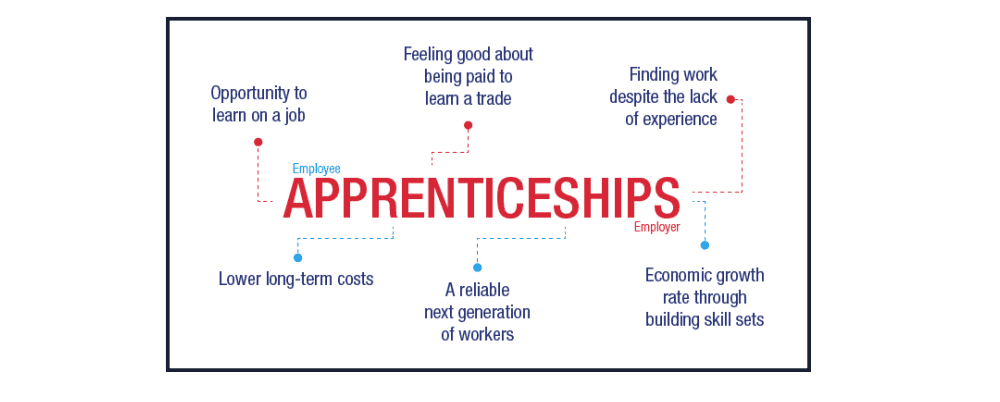Apprenticeships are designed to provide real jobs that are supported by work-based training programmes enabling young people and adults to gain job-specific skills and study for a related qualification.
Apprentices must be aged 16 or over and, except in exceptional circumstances, should work for at least 30 hours per week. Lasting a minimum of 12 months, apprenticeships typically combine on-the-job training at an employer’s site with off-the-job training provided by a training organisation.
Benefits for employers
Employers engage with apprenticeships for a variety of reasons. In a recent survey, the most popular driver (cited by 95% of employers) was to maintain or improve future skill levels in the organisation. Other motivations included: improve product or service quality (82%), improve productivity (80%), improve staff retention (78%), improve staff morale (76%), improve the employer’s ability to attract good staff (73%), and to bring new ideas into the organisation (71%).
Types of apprenticeship
There are currently over 200 different apprenticeships, known as apprenticeship frameworks, now referred to as standards, covering more than 1,500 job roles and 170 industries. As part of the current government’s apprenticeship reforms, frameworks are being replaced by employer-designed apprenticeship standards. Some of the new apprenticeship standards are ready for delivery and the government envisages that the migration from frameworks to standards will take place during the course of this parliament.
Apprenticeships are available at intermediate, advanced, and higher and degree levels. This enables employers to select the most relevant standard for the requirements of the job role and the apprentice’s previous experience, and, where possible, to provide a clearly defined progression pathway.
The Apprenticeship Levy
The government is also reforming apprenticeship funding, including the introduction of an apprenticeship levy in April 2017 to fund new apprenticeships. The levy will be paid by all private and public-sector employers in the UK with an annual pay bill of more than £3 million. Levy paying employers will be able to use the money collected to pay for training for apprentices via a new Digital Apprenticeship Service (DAS) account. The government says those employers not paying the levy will continue to have access to government funding to support apprenticeships. Further details about apprenticeship funding from May 2017 were announced on 12 August 2016.
Thinking of hiring an apprentice, but not sure where to start?
GCRD's apprenticeship experts provide advice and guidance on all aspects of employing apprentices. They will help you identify which apprenticeship programmes would benefit your organisation the most, advise on funding and grants to help stretch your training budget and ensure you secure the best training provision through our network of quality-assured providers. If you are thinking about becoming a registered apprenticeship provider, whether for your own staff or others, we can support you to make that transition, ensuring you have the processes and expertise in house to deliver the best quality training.
We can also recruit, employ and manage apprentices on your behalf through our Apprenticeship Training Agency (ATA). This service enables you to benefit from hosting an apprentice within your organisation but, as the apprentice is employed by the ATA, we will take care of any HR issues, performance management and payroll administration.


